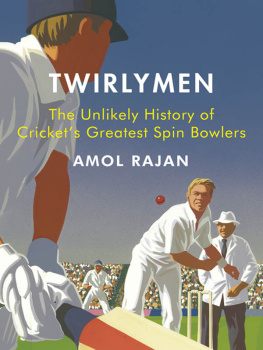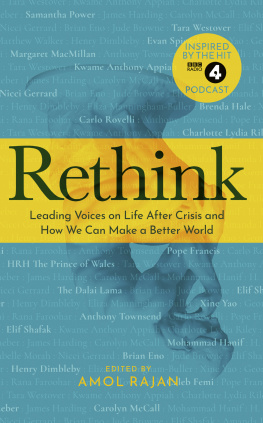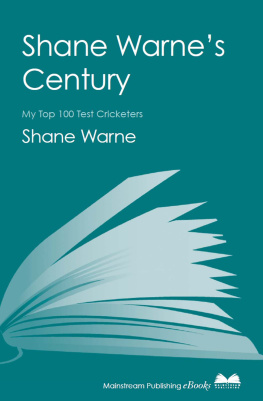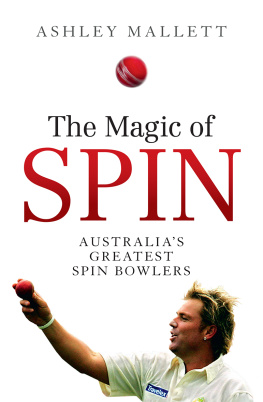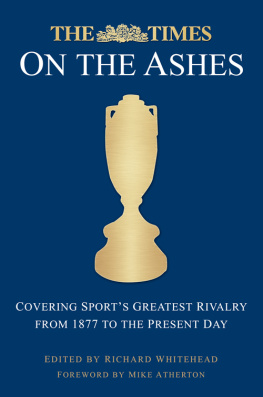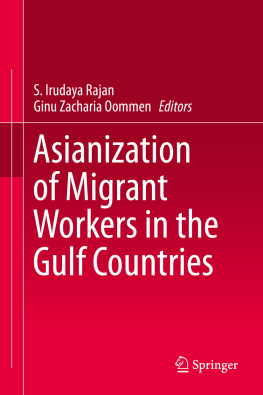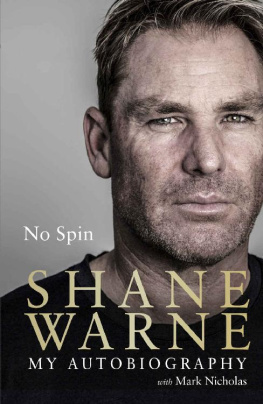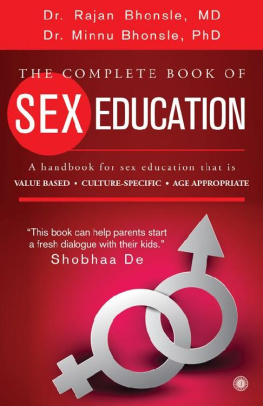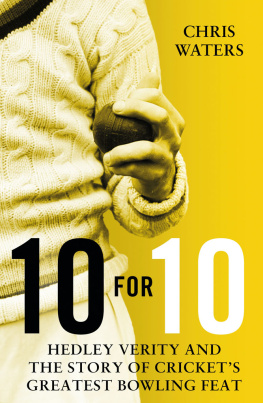
www.vintage-books.co.uk
About the Author
Amol Rajan is Deputy Comment Editor and Columnist for the Independent, having previously been a news reporter and Sports News Correspondent for the newspaper. He grew up in Tooting, south London, and from the age of 11 played for Sinjuns Cricket Club (now Sinjuns & Grammarians) in Wandsworth, becoming the youngest captain of a mens team when leading the Sunday First XI in 2002, aged eighteen.
This eBook is copyright material and must not be copied, reproduced, transferred, distributed, leased, licensed or publicly performed or used in any way except as specifically permitted in writing by the publishers, as allowed under the terms and conditions under which it was purchased or as strictly permitted by applicable copyright law. Any unauthorised distribution or use of this text may be a direct infringement of the authors and publishers rights and those responsible may be liable in law accordingly.
Version 1.0
Epub ISBN 9781446483718
www.randomhouse.co.uk
Published by Yellow Jersey Press 2011
2 4 6 8 10 9 7 5 3 1
Copyright Amol Rajan 2011
Amol Rajan has asserted his right under the Copyright, Designs and Patents Act 1988 to be identified as the author of this work
This book is sold subject to the condition that it shall not, by way of trade or otherwise, be lent, resold, hired out, or otherwise circulated without the publishers prior consent in any form of binding or cover other than that in which it is published and without a similar condition, including this condition, being imposed on the subsequent purchaser
Jiggery Pokery
Neil Hannon and Thomas Walsh Sony/ATV Music Publishing
All rights reserved. Used by permission.
First published in Great Britain in 2011 by
Yellow Jersey Press
Random House, 20 Vauxhall Bridge Road,
London SW1V 2SA
www.randomhouse.co.uk
Addresses for companies within The Random House Group Limited can be found at: www.randomhouse.co.uk/offices.htm
The Random House Group Limited Reg. No. 954009
A CIP catalogue record for this book is available from the British Library
ISBN 9780224083232
CONTENTS
For Pattabiraman Varadarajan, Sunanda Joshi, Keertichandra Rajan, Farrah Hossain, and Charlotte Rosemary Faircloth
Introduction
WHY I SPIN
I wish I could say, as George Orwell did, that from a very early age I knew that when I grew up I should be a writer. Given how things have turned out, were it true that might be a source of solace to me now. But the fact is I didnt. From a rather early age, in fact the age of nine years and eleven months, I knew that when I grew up I should bowl leg-spin.
At least that was my intention. I can trace its origins very precisely. It was 3 June 1993, and I had several hours earlier returned from primary school. It was a ritual of my fathers to watch The Nine OClock News, as it then was, and I was in the habit of ignoring all of it until the sport came on. But in the headlines at the top of the programme I cant remember the newsreader I saw approximately one and a half seconds of sport that would change my life.
Shane Warne, an enigmatic young Australian whose peroxide blond hair gave every indication of his being crickets answer to Debbie Harry, bowled over the wicket to Mike Gatting in the Old Trafford Test. It was his first ball in an Ashes match. Upon release, the ball swerved viciously in the air from left to right, dipped sharply and then turned dramatically in the opposite direction to hit the off-stump. Gatting was dumbfounded. Dickie Bird, umpiring, was similarly perplexed, and Richie Benaud, commentating, gave it the heavily accented understatement: Hes done it, hes started off with the most beautiful delivery.
Nothing would ever be the same again.
I had played Kwik cricket at school, and in long afternoons on Tooting Bec Common, but until that moment I had never understood the potential innate in a cricket ball, or realised the beauty there was in a leg-break. Batting had a rawness to it, as fast bowling did, and other sports had something similar; but spin bowling beating the bat in the air and off the pitch that was something new, something calculated, something that could be learned, even if you were obese, as I was (and Warne threatened to be).
The significance of this last point is tremendous. The generosity of my boyhood girth equipped me only for a form of bowling wherein my approach to the crease would be an amble rather than a sprint, and if I was to dream of sporting glory, as I did for the next decade of my life, leg-spin specifically it would have to be.
Having failed through a combination of injury and indolence to become a leg-spinner of renown myself, my motivation here is essentially that of the admiring critic. But it should be mentioned that this book is, in a very fundamental sense, the product of my own failure to warrant a place within the pages to come, alongside these heroes. I devoted my childhood to spin, and leg-spin in particular. I cycled to the nets at my local club, Sinjuns CC in Wandsworth, south London, before school, and ripped the lower part of my uniform climbing over the main gate so as to snatch a couple of overs in which to practise. My portly frame was incongruous with the athleticism of my ambition. Until the age of fourteen, when I remained resolutely more spherical than the newest cricket ball, less supportive parents than mine could have been forgiven for making me choose between leg-spin and the penny sweet cola bottles I gulped by the hundred on a daily basis, ensuring I would remain rotund.
It was this very frame that had led my first coach and mentor, Kevin Molloy, later Director of Sports at Alleyns Junior School in south London, to christen me Mushtaq or Mushy for short after the great Pakistani Mushtaq Ahmed, when I first turned up at Sinjuns aged ten and a half. This new name caused me to have a very clearly split childhood personality: I was Amol at school, but the real person I wanted to be, the personification of my dreams and ambitions, the person in whom was invested genuine emotion, was Mushy. So wholly did I embrace this nickname this persona that after seven years at Sinjuns, many of my very closest friends and associates, people with whom I had grown up, frequently had reason to ask, when invited by a third party, what my real name was. On a thousand scoresheets of the Fullers League in Surrey, I am known to the world as M. Rajan; though if I took a particularly decent haul I made sure the home scorer knew my initial was an A.
This double life intensified my devotion to spin. Awarded some book vouchers for a modest academic achievement, I escorted my father to Foyles in central London, whereupon he had hoped to initiate in his second son a lifelong devotion to literature. I can remember very precisely the look on his face as I steered him away from the section containing Dostoevsky and Conrad, and towards two books that changed the course of my life forever. He didnt think Peter Philpotts The Art of Wrist-Spin Bowling and Brian Wilkinss Cricket: The Bowlers Art would stimulate the intellectual activity he so longed to see, but his decision to sanction their purchase laid the foundation for a personal agenda of industry and diligence from which I am still recovering.
Next page
